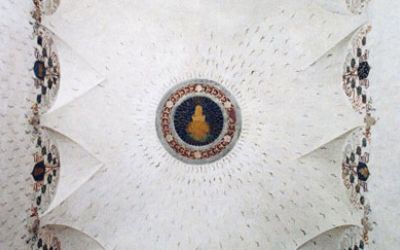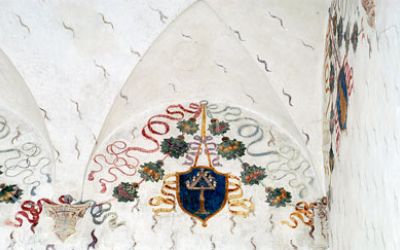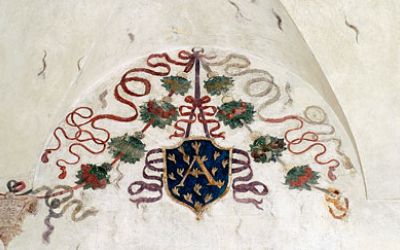The Room of the Crucible is one of the best conserved on the ground floor of the palazzo, which was used for formal receptions. The room’s particular significance derives from the fact that it is wholly devoted to the device of the Crucible, a symbol closely linked to the personal life of Francesco II Gonzaga, who wished it to be repeated all over the palazzo. Situated in the centre of the cloister vault it refers to historical events that took place after the Battle of Fornovo in 1495. This was marked by the victory of the Venetian army, led by Francesco II, over the French troops of Charles VIII. Despite his success at the battle, Francesco Gonzaga was accused of treason by the Venetian Senate for not having chased and defeated the fleeing French army once and for all. Although steadfast in defending his actions, Francesco was relieved of his command, imprisoned, tried and then acquitted. To mark this moment of anguish he adopted as his own personal device a bundle of gold rods standing in a crucible licked by flames. This was accompanied by the motto “PROBASTI ME DOMINE, ET COGNOVISTI”, “You have tested me, Lord, and you have known me”.
A heavy rain of small flames descends from the device at the centre of the vault, continuing uninterruptedly along the walls. Appearing in the lunettes inside a shield hanging from ribbons between two Mantegna-like festoons of fruit and flowers are other Gonzaga devices particularly associated with Isabella d’Este, wife of Francesco II: the Candelabra (exclusive love), a Blazing A (impassioned love [amore]), Musical symbols (harmonic union).






